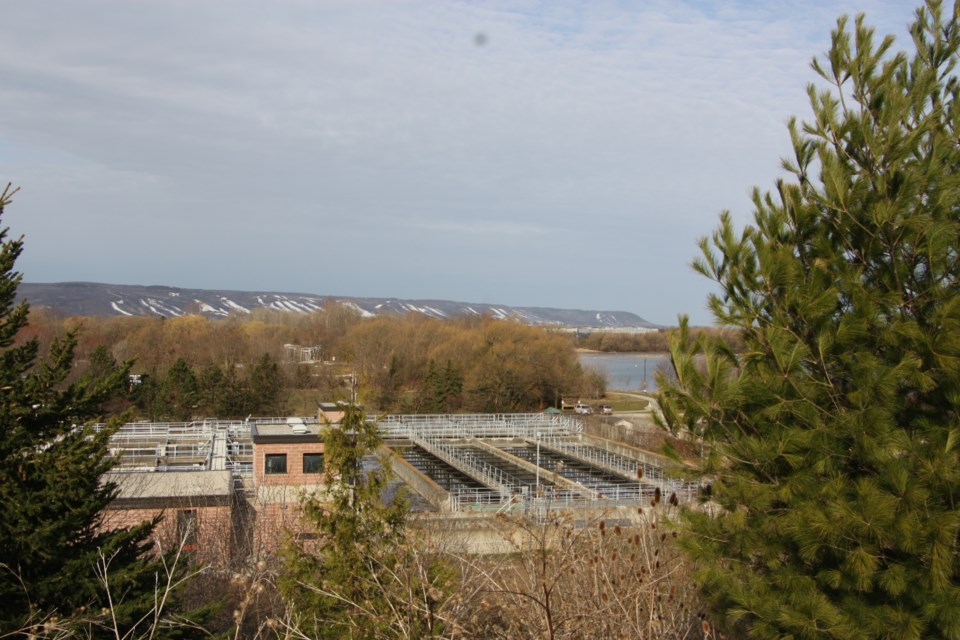The latest COVID wave has challenged the province's existing metrics by overwhelming testing capacity, making accurate COVID numbers a bit of a crapshoot.
Without widespread access to PCR testing, there’s no true measurement of COVID-19 case counts in communities, which may mean other surveillance tools could play a bigger role.
For example, some communities in Simcoe County have been collecting and submitting wastewater samples for about a year, which have been indicating ups and downs in the virus’ presence.
Thought it’s a new system not without its challenges, the chief medical officer of health for the Simcoe Muskoka District Health Unit, Dr. Charles Gardner, said it could help flush out a bit more data on how prevalent the virus is in a community.
“We do need to look at all the tools at our disposal and this would be a tool that operates independently of testing, so it would have that kind of value,” said Gardner. “I think that it is likely to become a useful tool.”
In Simcoe County there are four communities participating in a wastewater surveillance program. Samples are collected three times a week from treatment plants in Barrie, Midland, and Orillia and once a week from Collingwood.
Within a few days of being collected, the samples are transported to the lab at Ontario Tech University in Durham. They’re processed and analyzed and results are posted to a provincial platform. The Simcoe Muskoka District Health Unit gathers those results and publishes them on its HealthSTATS web page on Tuesdays and Thursdays.
In an emailed statement, the health unit said there’s still work to be done to interpret the data they’re getting from wastewater surveillance for COVID-19, which is a relatively new and emerging field. The testing detects SARS-CoV-2 RNA levels in the wastewater, which is genetic material from the virus that causes COVID-19.
“We are unable at this time to say, for example, that an increase of X amount of SARS-CoV-2 RNA in wastewater means 10 cases in the community,” stated the health unit. “What we are doing right now is looking at general trends. For example, recent wastewater samples collected in late December show high levels of SARS-CoV-2 RNA in wastewater samples, which supports data sources that describe rapid growth in our local communities.”
The most recent samples collected from Barrie, Midland, and Orillia had “substantially” higher levels of the virus compared to samples from the previous week, according to the health unit.
However, the epidemiology team isn’t declaring the increase a “trend” because of fluctuating levels over the last three weeks.
Case counts are skyrocketing in the region with the highest ever number of new cases in a day reported on Dec. 31 (715 cases). During the week of Dec. 26, there were 3,537 new cases reported to the health unit, and that is expected to be an underestimation of actual cases in the region because many people are not eligible for a PCR test under Ontario’s current testing strategy.
The Ontario COVID-19 Science Advisory Table published a brief on the role wastewater testing for COVID-19 surveillance in August, 2021, with one of the key messages suggesting it can be useful for the early detection of outbreaks and surges.
The brief noted there’s a limited evidence base for its use, though it is growing, and there are “notable” interpretation challenges.
The issues with this method surround consistency of collection and the way the viral load is measured, a patchwork of testing programs worldwide instead of one sustainable system, and a lack of collaboration to make sure the testing provides information that can be used and communicated effectively.
For example, in Simcoe-Muskoka it’s several days, and sometimes more than a week before the samples collected in local communities are analyzed and the results reach the health unit’s epidemiology team.
Wastewater testing, however, also addresses some of the challenges the world has faced in understanding the prevalence of SARS-CoV-2 (the virus that causes COVID-19) in communities. One wastewater test can measure the level of infection in an entire population, and it is present in stool whether a person is asymptomatic, symptomatic, or pre-symptomatic.
To date, the wastewater testing has been used as a complementary surveillance measure to clinical testing and used for detecting and monitoring variants of concerns in the participating communities and institutions. In Ontario, wastewater testing has helped identify new COVID-19 outbreaks before they were detected with other methods.
Wastewater testing has been used to measure other health threats such as polio, antimicrobial resistance, and illicit drug use, according to the science table.
You can view the Simcoe County wastewater surveillance data compiled and interpreted by the health unit here.
